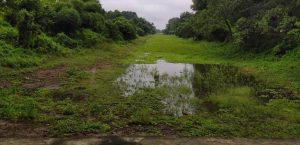NCSUY exists only on paper

Jajpur: Nabakrushna Choudhury Secha Unnayan Yojana (NCSUY), an ambitious scheme to irrigate farmlands in state, has remained a non-starter even though more than seven years have elapsed since its announcement, according to reports. The state government had approved this irrigation project November 23 in 2017, marking the birth anniversary of former chief minister Nabakrushna Choudhury. Initially, Rs 635 crore was earmarked for its implementation in the first three years in Nabarangpur and Malkangiri districts. Subsequently, in April 2022, the government decided to expand the scheme across the state, aiming to rejuvenate lost command areas and create additional irrigation potential.
However, despite the passage of more than seven years since its approval, the promises have largely remained on paper, leading to frustration among farmers. The government had set a target of providing irrigation facilities across 100 per cent of agricultural lands in the state.
Under this programme, efforts were being made to augment irrigation capacity, maintain canals, prepare crop calendars, ensure equitable water distribution, and strengthen water user associations. Every year, significant investments have been made to build new irrigation channels, repair Odisha’s group reservoirs, and revive management operations.
Nevertheless, many major, medium, and minor irrigation projects under the Water Resources department have become outdated, irrigating much less farmland than their designed capacities. Under NCSUY, from 2020–21 to 2024–25, a total expenditure of Rs 823.45 crore was proposed to restore 42,658 hectares of lost irrigated land and create additional irrigation potential over 7,442 hectares of farmland. However, due to the underutilisation of the allocated funds, these objectives have been missed, according to complaints. The government intended to fully implement the scheme across the state. Official notifications indicate that while there has been a slight reduction of 1.99 per cent and 3.4 per cent in the gaps between Irrigation Potential Created (IPC) and Irrigation Potential Utilised (IPU), many major, medium, and minor irrigation projects of the Water Resource department continue to underperform relative to their design capacities. Consequently, to increase the irrigated area beyond the original capacity and bridge the gap between the potential created and utilised, expansion activities under several projects were proposed. Nevertheless, the benefits of the scheme have fallen far cry for the farmers. It is widely acknowledged that a country’s economy is dependent on the development of its farmers, for which the state government has implemented numerous schemes aimed at boosting the agriculture sector. However, due to administrative negligence, important initiatives like NCSUY have faltered, said local intellectuals.
In Jajpur district, many canal concrete-lining works could not be completed. As a result, irrigation facilities failed to reach the targeted agricultural lands at the tail ends. The district’s Mega Lift Irrigation Project stands as another example, where irrigation was planned over approximately 12,800 hectares in nine blocks—Badachana, Bari, Dharmasala, Jajpur, and Rasulpur among them. Yet, not a single project has become fully operational so far. Consequently, farmers have expressed disappointment over the lack of irrigation facilities during both Kharif and Rabi seasons under the Mega Lift Irrigation initiative.
News